This report examines the processes and actions used to establish the Carpathian Network of Protected Areas. The first section describes the nature conservation structures in place in the Alps and the Carpathian mountains and also gives technical details about the partnership. Based on the responses to a questionnaire, the second section looks at the needs and expectations of the Carpathian protected areas in relation to the network's future.
A technical file combining the specifications drawn up following the consultation phase and needs assessment together with the reference documents for developing the system: conceptual data model, list of headings and diagram of logical relationships. The document also describes how the prototype database will be developed in conjunction with the GIS and outlines a plan for continuing the project.
The first section of this collection describes the environmental programs (agriculture and forestry) in existence in the Alpine countries and provides case studies specific to the Alpine protected areas. The second section presents a selection of quality measurement tools for facilitating sustainable local development and reconciling human activities and natural ecological balances.
Looks at forest management: forestry development in protected areas, follow-up and long-term monitoring.
The document uses a typology to demonstrate the differences and similarities between the protected areas of the eight Alpine countries. The Alpine Network is seeking to contribute to a better understanding of these areas which vary by country and culture.
An inventory of data relating to visitor numbers, amenities and tourism infrastructure in Alpine protected areas in order to evaluate the impact on the regional economy.
The Alpine Protected areas as promoters of soft mobility.
Brochure published in the framework of the international seminar « Soft mobility and alpine protected areas » (ALPARC - MEEDDAT/F, 2008).
Synthesis of the results of the international seminar "Sustainable mobility and Alpine Protected Areas" (June 11th 2008, L’Argentière-la-Bessée/F) and the soft mobility report on existing projects in the Alpine Protected Areas.
Sharing of experiences and specific know-how concerning sustainable mobility also continued under the framework of the ALPARC’s working group “Sustainable Tourism, Cultural Heritage and Soft Mobility ”, coordinated by the Vercors Natural Park/F and the coordination unit of ALPARC network.
This collection of best practices in sustainable tourism diversification was gathered during a survey conducted in the Alpine Protected Areas.
Frankreich schlägt vor, ein alpenweites Netzwerk von Schutzgebieten einzurichten.
ALPARC wird im Nationalpark Les Ecrins (FR) im Rahmen der ersten internationalen Konferenz der alpinen Schutzgebiete gegründet.
Erstellung des Regelwerks für das Netzwerk Alpiner Schutzgebiete; ALPARC wird offiziell als Instrument zur Anwendung der Alpenkonvention anerkannt.
Konferenz der Schutzgebiete europäischer Bergregionen
Der Ständige Ausschuss der Alpenkonvention beauftragt das Netzwerk Alpiner Schutzgebiete mit einer Studie zum ökologischen Verbund und grenzübergreifenden Schutzgebieten.
ALPARC feiert sein 10jähriges Bestehen.

Das Team von ALPARC wird dem Ständigen Sekretariat der Alpenkonvention als Task Force Schutzgebiete angegliedert.
Partnerschaft mit CIPRA, ISCAR und dem WWF im Rahmen der Initiative Ökologisches Kontinuum
Mit dem Ziel, ein funktionierendes ökologisches Netzwerk zu schaffen, startet ALPARC in Zusammenarbeit mit Partnerorganisationen ein Großprojekt zu ökologischen Korridoren.
Unterzeichnung eines Memorandums über die Zusammenarbeit zwischen der Alpenkonvention, der Karpatenkonvention und der Konvention über die biologische Vielfalt.
ALPARC koordiniert die Aktivitäten der Plattform "Ökologischer Verbund" der Alpenkonvention.
Im Januar wird ALPARC in Frankreich als Verein eingetragen und trennt sich vom Ständigen Sekretariat der Alpenkonvention.
Im Februar unterzeichnen ALPARC und die Alpenkonvention ein Memorandum der Zusammenarbeit, um die Zusammenarbeit zwischen den beiden Organisationen zu definieren und Synergien zu nutzen.
ALPARC feiert sein 20jähriges Bestehen.
ALPARC organisiert erstmals die internationale Veranstaltung ‘Jugend auf dem Gipfel‘, damit junge Menschen aus dem Alpenraum wieder eine stärkere Bindung mit der Natur und Kultur erfahren können.
Mit den Projekten InnovAlps und WeWild engagiert sich ALPARC erstmals zum Themenbereich „Regionale Entwicklung und Lebensqualität“.
ALPARC leitet zwei dreijährige EU-Alpenraumprojekte. ALPBIONET2030 widmet sich dem Management der Natur und Lebensräume in den Alpen. YOUrALPS will der Bildung zum Thema Berge zu mehr Struktur verhelfen und dazu beitragen, dass die Werte und das Wissen zu den Bergen besser in der Praxis angewendet werden.
ALPARC beteiligt sich am zweijährigen EU-Alpenraumprojekt GaYA zum Thema Umsetzung der Jugendbeteiligung in den Alpen.
Start der Kommunikationskampagne “Be Part of the Mountain” mit dem Ziel, die negativen Auswirkungen der Menschen durch den Wintersport auf die Tierwelt in den Alpen zu verringern.
Am 11. April wird die regionale Plattform des Netzwerks ‘ALPARC CENTR’ALPS’ offiziell im Naturpark Nagelfluhkette (Balderschwang, DE) gegründet. Sie soll die regionale Präsenz und die Nähe zum Netzwerk sicherstellen.
ALPARC feiert sein 25-jähriges Bestehen in Monêtier-les-Bains, Ecrins Nationalpark.
Mit 5 Partnern des Projektes OpenSpaceAlps und 10 HEALPS2-Projektpartnern haben ALPARC und die Projektpartner beide Alpine Space-Projekte erfolgreich abgeschlossen.
Die regionale Plattform ALPARC CENTR’ALPS ist mit einer Kontaktstelle mit eigenem Personal in Immenstadt (DE) präsent.
Alpenraum-Projekt „PlanToConnect“ (Projekt baut auf den Ergebnissen von ALPBIONET2030 auf). Ziel: Integration der ökologischen Konnektivität in die Raumplanung des Alpenraums.
Start von zwei Alpenraum-Projekten: „LiveAlpsNature“ (ALPARC LeadParnter). Ziel : Besucherlenkungsmassnahmen alpiner Schutzgebiete durch innovative Angebote (OneHealthApproach) und moderne digitale Plattformen für outdoor Aktivitäten. „AlpsLife“ (ALPARC, zentraler Projektpartner). Ziel: Bereitstellung von Methoden zu einem gemeinsamen Biodiversitätsmonitoring und alpinen Frühwarnsystem zum Arten- und Habitatschwund.
30 Jahre internationale Zusammenarbeit der alpinen Schutzgebiete im Netzwerk ALPARC.